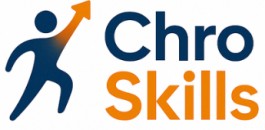
Understanding the Dynamics of High-Volume Recruiting
Grasping the Nuances of Large-Scale Recruitment
When navigating the complexities of high-volume recruiting, understanding its dynamics becomes paramount. One key element is the need to efficiently manage large numbers of applications and candidates within set timeframes. This helps maintain quality throughout the recruiting process while reducing stress on hiring teams. Volume hiring is characterized by intense processes aimed at filling multiple positions quickly. This requires meticulous planning, streamlined techniques, and effective strategies to attract top talent. Leveraging vast recruiting platforms like job boards and social media is advantageous, allowing companies to reach potential candidates rapidly. In high-volume recruitment scenarios, the sheer number of applications can overwhelm traditional recruiting methods. Therefore, companies must utilize advanced tools and technologies, integrating them into their recruitment processes to enhance efficiency. This ensures a seamless application process, elevating the overall candidate experience. A significant component involves understanding and adapting to the challenges of high volume. It often requires robust systems that not only screen and filter but also engage and resonate with a diverse talent pool. By optimizing each stage of the hiring process, from job postings to selection, organizations can align better with business objectives and achieve successful outcomes. For those seeking to refine their leadership within HR practices, insights into effectively mastering the art of people leadership can further empower their capabilities in managing high-volume recruitment challenges efficiently. Learn more.Strategic Planning for Large-Scale Talent Acquisition
Tactical Approaches to Scale Up Talent Acquisition
In the complex landscape of high-volume recruitment, strategic planning becomes a cornerstone for any Chief Human Resources Officer aiming to build a workforce designed to meet organizational goals. Companies often face the challenge of engaging with a large number of applicants and efficiently streamlining the recruitment process, requiring tactical strategies that balance speed with quality. One crucial aspect is to align the recruiting strategies with the company's long-term vision and short-term goals. This ensures that not only are immediate hiring needs met, but the recruited candidates also fit seamlessly into the envisioned company culture over time. Clear job descriptions and well-planned job postings can significantly enhance the recruitment process, as they attract qualified candidates from the get-go. Developing an effective plan requires an understanding of the job market, analyzing labor trends, and preempting changes in demand for specific roles and skills. To maintain a high standard in hiring processes, human resources teams must focus on efficient methods to screen large volumes of applications. This can be achieved by leveraging advanced tools and software designed to sift through applicant data effectively, prioritizing potential candidates who exhibit the right competencies and cultural alignment. Employers must also streamline their recruitment process by introducing practices like candidate self-scheduling (more about that at "Enhancing Efficiency with Candidate Self-Scheduling"). By doing so, recruitment teams can save considerable time, allowing them to concentrate on evaluating top talent rather than operational details. Social media and job boards play a vital role in volume recruitment. Well-crafted job advertising and a proactive social media presence can significantly heighten employer branding and reach wider audiences. By strategically utilizing these channels, companies can tap into larger candidate pools to identify and engage the best candidates. Moreover, collaboration within a recruitment team is essential to navigate the intricacies of high-volume hiring. By fostering a collaborative environment, recruitment teams can share insights and adjust strategies in real time to meet the dynamic demands of the volume hiring process. In summary, the foundation of successful large-scale recruitment lies in meticulous strategic planning. By understanding the complexities of volume recruiting and aligning tactics with organizational objectives, companies will be well-equipped to acquire the talent they need efficiently and effectively.Leveraging Technology and Data Analytics
Maximizing Efficiency with Technological Tools
In today’s competitive landscape, staying ahead in high-volume recruitment demands an aptitude for technology and data analytics. Utilizing these tools effectively can greatly enhance the recruitment process, allowing for a streamlined approach to managing a large number of applications and identifying top talent swiftly. Adopting recruitment software and applicant tracking systems (ATS) can be a game-changer for Chief Human Resources Officers (CHROs) overseeing high-volume recruiting. These systems offer a comprehensive view of candidate data, helping recruiters manage potential candidates across various stages of the hiring process. Automating routine tasks, such as scheduling interviews and sending follow-up emails, allows HR teams to focus on assessing the quality of candidates, rather than getting bogged down by administrative duties.Data-Driven Decision-Making
A strong grasp of data analytics enables CHROs to develop insights that drive better decision-making and strategies. By analyzing metrics such as application completion rates, candidate drop-off points, and the effectiveness of different job advertising platforms, HR leaders can identify trends and fine-tune their approaches to volume recruiting. Gathering data on candidate experience also plays a vital role. Understanding how candidates perceive the recruitment process can aid in refining the employer brand, ultimately enhancing the organization’s ability to attract and hire qualified candidates.The Role of Social Media and Integration
Harnessing social media platforms is crucial in broadening the reach to a wider pool of job seekers. Integrating social media into recruitment strategies not only increases visibility but also helps in fostering a connection with candidates before they even enter the formal application process. Social platforms serve as valuable tools for promoting company culture and values, which can significantly boost employer branding and attract candidates whose values align with those of the company. By effectively leveraging technology and data analytics, CHROs can efficiently manage high-volume recruitment, ensuring a seamless process from job postings to onboarding. Accessing these tools empowers HR leaders to refine their strategies continuously, keeping their teams agile and responsive to the evolving demands of the recruitment landscape. For those looking to further enhance their understanding of strategic planning in HR, here is an insightful resource on engaging outdoor activities for youth groups.Building and Leading an Effective Recruitment Team
Nurturing a Cohesive Recruitment Team
Creating and leading an effective recruitment team is crucial for successfully navigating high volume recruitment. This means instilling a shared vision and set of values, aligning them with the company’s culture and goals. A well-coordinated team can efficiently manage large numbers of applications, ensuring the hiring process runs smoothly. A clear understanding of the dynamics of high-volume recruiting is essential. Recruitment teams must be equipped with both the strategies to navigate the complexities of hiring a large number of candidates and the tools that streamline the recruitment process. This includes utilizing advanced recruitment technologies for better candidate tracking and fostering a culture of continuous learning among team members. Consider the importance of establishing best practices and standard operating procedures that guide the team through volume hiring processes. This assists in maintaining the quality of hires despite the high number of applicants. Also, investing in training and development can help enhance the team's capabilities, encouraging them to adapt to ever-changing recruitment demands. Moreover, fostering strong communication within the team and with other departments is critical. Regular meetings, feedback sessions, and collaborative platforms can improve the collective performance of your recruitment team. A team that works closely together is more likely to offer a positive candidate experience, which is invaluable in high-volume recruitment. Encourage your recruitment team to leverage social media and job boards effectively to reach a broader pool of potential candidates, thus improving the chances of attracting top talent. They should also be trained to articulate the company's employer brand clearly, as this can significantly impact the perception of potential candidates. By focusing on these aspects, Chief Human Resources Officers can build a resilient recruitment team capable of handling the pressures associated with large-scale talent acquisition.Enhancing Employer Branding and Candidate Experience
Elevating Candidate Experience Through Employer Branding
In the high-stakes arena of high-volume recruiting, providing a top-notch candidate experience is non-negotiable. An impactful employer brand not only draws in talent but ensures candidates leave the recruitment process with a positive impression, regardless of the outcome. High-volume recruitment can often feel impersonal due to its scale. To counter this, it's crucial to give each candidate the feeling of being valued and understood. Here are some strategies to enhance employer branding and ensure a quality experience:- Authenticity in Employer Brand Messaging: Consistency in communicating your company culture and values across various platforms helps attract candidates aligned with your mission. Ensure your job postings, social media content, and career site reflect true aspects of your workplace.
- Streamlining the Application Process: A cumbersome application process can deter top talent from completing applications. Simplifying this process and leveraging user-friendly tools can help retain potential candidates throughout the initial stages of recruitment.
- Effective Use of Job Advertising: Tailor job advertisements to highlight not only the role but the unique aspects of your company. Utilize job boards strategically to reach large numbers while ensuring the messaging persuades candidates of the genuine opportunities within your company.
- Personalization and Communication: Personalize communication at every stage. Even automated messages can offer cordiality. Keeping candidates informed about their application status can significantly enhance their experience.
- Understanding Feedback Loops: Use candidate feedback to continually refine the recruitment process. This will not only improve experience but will also reflect a commitment to excellence and adaptation.
Continuous Improvement and Adaptation
Embracing a Culture of Continuous Learning and Flexibility
In the fast-paced world of high-volume recruitment, companies must continually adapt and improve their recruitment strategies. By fostering a culture of continuous learning, companies can streamline their recruitment process and enhance their strategies, ensuring they remain competitive in attracting top talent.
One way to keep up with the ever-changing recruitment landscape is to consistently evaluate the effectiveness of recruitment tools and methodologies. This involves analyzing data from the recruitment process to identify areas where improvements can be made in hiring efficiency or candidate experience. Utilizing analytics will help in understanding patterns and trends in high-volume hiring, allowing for informed decision-making.
Feedback is another crucial aspect of continuous improvement. Gathering insights from candidates and hiring teams alike can provide valuable information on how their experiences align with company expectations. This feedback loop can then guide adjustments in the application process, job postings, and overall recruitment strategies.
Keeping abreast of the latest best practices and technological advances will also serve to enhance recruitment efforts. As the landscape evolves, integrating new technological solutions can help streamline processes, making the hiring cycle quicker and more efficient. For instance, implementing AI-driven tools for resume screening can significantly increase the quality and speed of filtering through a large number of applications.
Social media and job boards remain powerful tools for reaching potential candidates. However, staying innovative with these platforms, such as engaging in more interactive job advertising or utilizing advanced algorithms for candidate targeting, can elevate a company's employer brand.
Lastly, engaging in regular training sessions and workshops for the recruitment team can enhance their skills, assisting the company in sourcing, evaluating, and hiring candidates effectively. This not only improves the recruitment process but also builds a more resilient team poised to tackle the challenges of volume recruitment.













